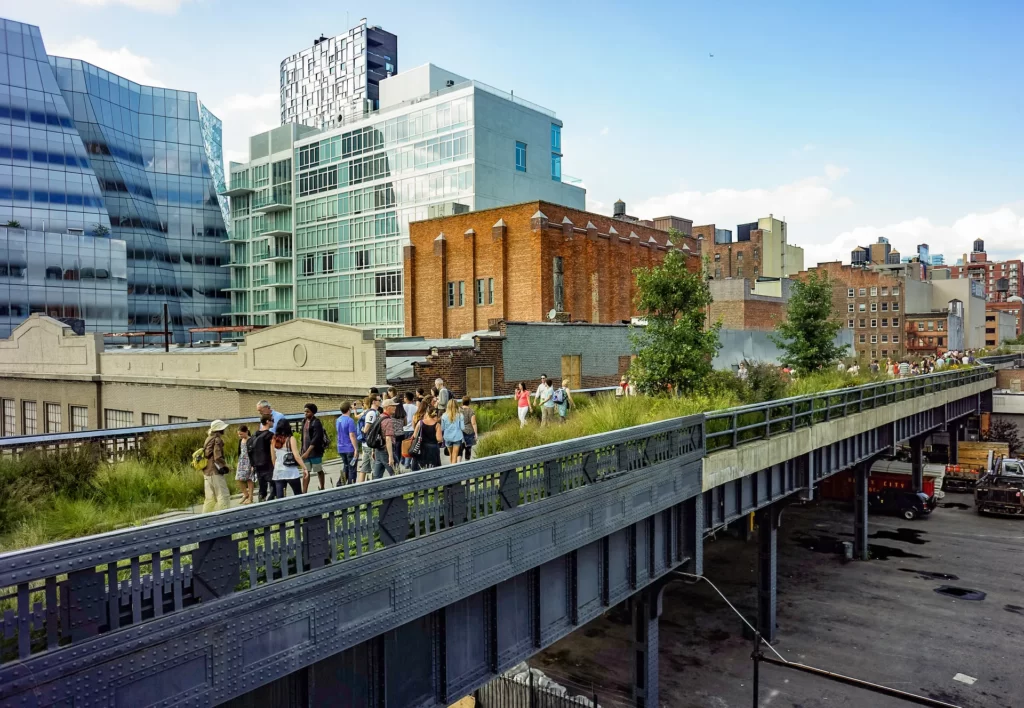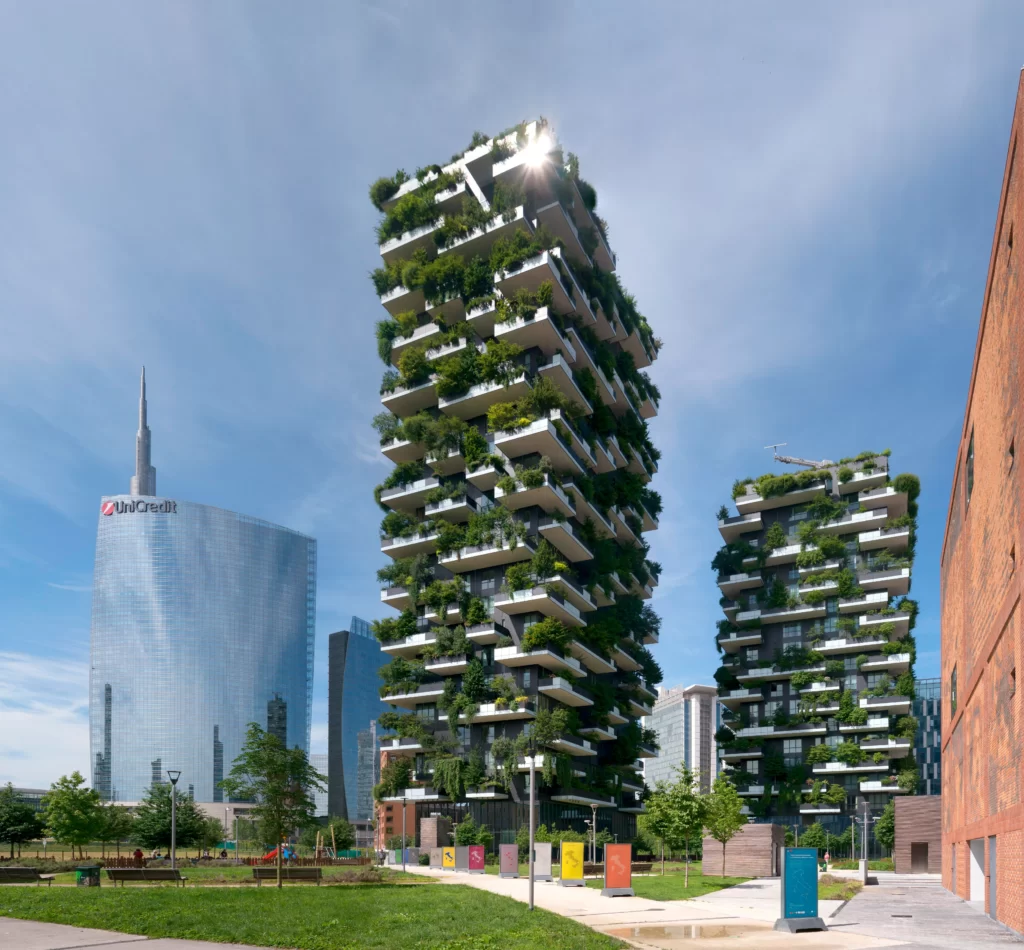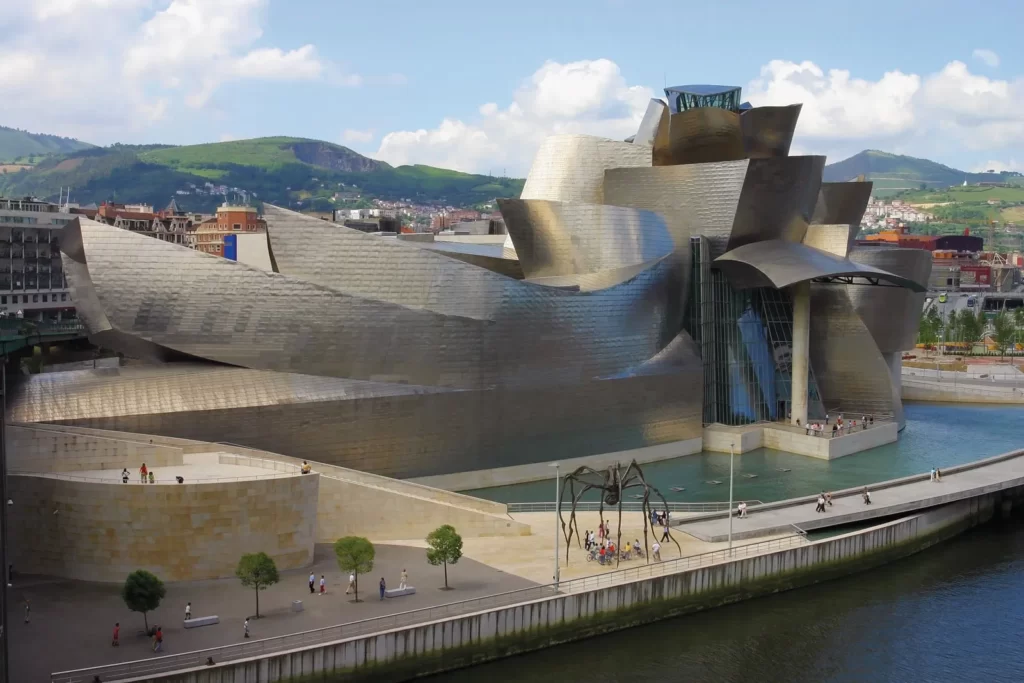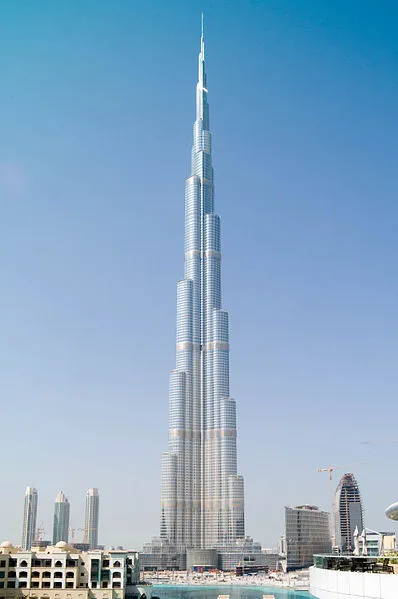If you want to know about the staircase design or landscape garden or requirements for disabled persons in a building, please click the link.
Introduction
Contemporary architecture refers to the current architectural style that reflects the design trends and innovations of the present time. It encompasses a broad range of styles and forms, and is characterized by a focus on functionality, minimalism, sustainability, and the innovative use of technology and materials.

Contemporary architecture also emphasizes the connection between the building and its environment, and the social and cultural context in which it exists. This style often includes clean lines, geometric shapes, and the use of modern materials such as glass, steel, and concrete. Overall, contemporary architecture is dynamic and constantly evolving to reflect the changing needs and aspirations of society.
1) Historical context
The origins of contemporary architecture can be traced back to the early 20th century, with the emergence of the Modernist movement. Modernism rejected traditional architectural styles and instead focused on functionality and simplicity. This led to the development of new materials and construction techniques, such as reinforced concrete and steel frames, which allowed for greater flexibility in design.
The Bauhaus movement, founded in Germany in 1919, was one of the most influential modernist movements in architecture. The Bauhaus emphasized the importance of combining art and technology to create functional and aesthetically pleasing designs. This approach had a profound impact on contemporary architecture, as many architects continue to incorporate this principle into their work.
In the 1950s and 1960s, the International Style emerged as a dominant force in contemporary architecture. This style emphasized the use of simple geometric forms, such as squares and rectangles, and the use of industrial materials such as glass and steel. Key figures associated with this style include Ludwig Mies van der Rohe, Walter Gropius, and Le Corbusier.
During the 1970s and 1980s, postmodernism emerged as a reaction against the perceived coldness and sterility of modernist architecture. Postmodernism celebrated eclecticism, combining different styles and elements to create unique and playful designs. Key figures associated with this movement include Robert Venturi, Denise Scott Brown, and Michael Graves.
In recent years, contemporary architecture has become increasingly focused on sustainability and the use of new technologies. Many architects are incorporating green design principles, such as passive solar design and the use of renewable energy sources, into their work. Additionally, the development of digital technologies has allowed architects to create complex and innovative designs that were previously impossible to achieve.
Overall, contemporary architecture has evolved and changed significantly over the past century, reflecting the changing needs and aspirations of society. Key figures and movements have played a critical role in shaping this evolution, and contemporary architects continue to build upon this legacy to create new and exciting designs.
2) Characteristics of contemporary architecture
The defining features of contemporary architecture include a focus on functionality, minimalism, and the innovative use of technology and materials. Contemporary architecture often emphasizes the connection between the building and its environment, and the social and cultural context in which it exists.
One key difference between contemporary architecture and traditional architectural styles is the focus on simplicity and minimalism. Contemporary architecture often features clean lines, geometric shapes, and a lack of ornamentation. This emphasis on simplicity reflects the desire for functional buildings that are efficient and adaptable to changing needs.
Another difference is the use of modern materials and technologies. Contemporary architecture often incorporates innovative materials such as glass, steel, and concrete, which allow for greater flexibility in design. Additionally, the use of digital technologies has enabled architects to create complex and innovative designs that were previously impossible to achieve.
Contemporary architecture also differs from other architectural styles in its emphasis on sustainability. Many contemporary architects incorporate green design principles, such as passive solar design and the use of renewable energy sources, into their work. This reflects a growing awareness of the need to design buildings that are environmentally responsible and energy-efficient.
Overall, contemporary architecture is a dynamic and evolving style that reflects the changing needs and aspirations of society. Its focus on functionality, simplicity, and sustainability, as well as the innovative use of materials and technology, set it apart from other architectural styles.
3) Sustainable design
Sustainable design is critical in contemporary architecture because it helps to minimize the impact of buildings on the environment, reduce resource consumption, and promote the health and wellbeing of building occupants. As concerns about climate change and resource depletion continue to grow, sustainable design has become an essential consideration in architectural practice.
Contemporary architects are incorporating sustainable design principles in a variety of ways. One approach is to design buildings that are energy-efficient, using passive solar design strategies such as orientation, shading, and natural ventilation. This can reduce the amount of energy required for heating, cooling, and lighting, and can help to minimize the carbon footprint of buildings.
Another approach is to use renewable energy sources such as solar, wind, and geothermal power to generate electricity and heat. This can help to reduce reliance on fossil fuels and minimize greenhouse gas emissions.
Contemporary architects are also incorporating sustainable materials and construction methods into their designs. This includes using materials that are locally sourced and renewable, such as bamboo and straw bales, and using construction methods that minimize waste and environmental impact.
Water conservation is another important aspect of sustainable design. Contemporary architects are designing buildings that use rainwater harvesting systems, gray water systems, and low-flow fixtures to reduce water consumption.
Finally, sustainable design in contemporary architecture also focuses on creating healthy indoor environments for building occupants. This includes designing buildings that maximize natural light and ventilation, minimize indoor air pollution, and promote physical and mental wellbeing.
In conclusion, sustainable design is essential in contemporary architecture to minimize the environmental impact of buildings, reduce resource consumption, and promote healthy indoor environments. Contemporary architects are incorporating sustainable design principles into their work in a variety of ways, including energy-efficient design, renewable energy sources, sustainable materials and construction methods, water conservation, and promoting occupant wellbeing.
4) Technological advancements
Advancements in technology have had a significant impact on contemporary architecture, enabling architects to design and construct buildings in ways that were previously impossible. Some of the most significant technological advancements in contemporary architecture include:
- Computer-Aided Design (CAD): CAD software allows architects to create highly detailed and precise digital models of buildings, which can be used to visualize the design, identify potential issues, and make modifications before construction.
- Building Information Modeling (BIM): BIM technology allows architects to create comprehensive 3D models of buildings, which can be used to simulate construction, analyze performance, and coordinate with other stakeholders.
- 3D Printing: 3D printing technology allows architects to create complex and intricate building components with precision and accuracy, reducing waste and improving efficiency.
- Sustainable Materials: Advances in material science have led to the development of new, sustainable materials such as cross-laminated timber, which can be used to create strong, durable, and environmentally friendly buildings.
- Energy-Efficient Systems: New technologies such as smart thermostats, solar panels, and energy storage systems can be incorporated into buildings to reduce energy consumption and promote sustainability.
- Virtual and Augmented Reality: Virtual and augmented reality technologies allow architects to create immersive visualizations of buildings, enabling clients and stakeholders to experience the design in a realistic and interactive way.
Overall, these technological advancements have allowed contemporary architects to create buildings that are more sustainable, efficient, and innovative than ever before. They have also enabled architects to collaborate more effectively with other stakeholders and to communicate their designs more clearly and effectively.
5) Urban design
Contemporary architecture is playing an important role in shaping urban design by creating innovative and sustainable buildings that respond to the needs and aspirations of communities. Some of the ways in which contemporary architecture is influencing urban design include:
- Creating Sustainable Urban Environments: Contemporary architects are designing buildings and urban spaces that promote sustainable living and minimize the impact on the environment. This includes designing buildings with green roofs, rainwater harvesting systems, and other sustainable features that reduce energy consumption and minimize waste.
- Integrating Public Space: Many contemporary architects are designing buildings that incorporate public spaces, such as parks, plazas, and walkways, into the design. This encourages social interaction and community building, making cities more livable and vibrant.
- Creating Mixed-Use Developments: Contemporary architects are designing mixed-use developments that incorporate a variety of uses, such as residential, commercial, and cultural spaces, into a single building or development. This creates a more diverse and dynamic urban environment that encourages interaction and collaboration between different groups.
- Promoting Walkability: Contemporary architects are designing buildings and urban spaces that promote walkability and reduce reliance on cars. This includes designing buildings that are located close to public transportation, creating pedestrian-friendly streetscapes, and incorporating bike lanes into the design.
Some of the most innovative contemporary urban design projects include:
- The High Line, New York City: The High Line is a 1.45-mile-long elevated park built on an abandoned railway line in Manhattan. The park features a mix of public spaces, gardens, and cultural attractions, and has become a major tourist attraction and a model for urban regeneration.

- The Bosco Verticale, Milan: The Bosco Verticale is a pair of residential towers in Milan that incorporate more than 900 trees and 20,000 plants into the design. The towers are designed to promote biodiversity and reduce pollution, and have won numerous awards for their innovative design.

- The Vancouver Convention Centre, Vancouver: The Vancouver Convention Centre is a LEED Platinum-certified building that features a living roof, a seawater heating and cooling system, and other sustainable features. The building has become a model for sustainable urban design and has won numerous awards for its innovative design.

Overall, contemporary architecture is shaping urban design by creating sustainable, innovative, and community-oriented buildings and spaces that respond to the needs and aspirations of cities and their inhabitants.
6) Examples of contemporary architecture
There have been numerous iconic and influential contemporary architecture buildings built around the world. Below are some examples of buildings that have made significant contributions to the field of contemporary architecture:
Guggenheim Museum Bilbao, Spain:

Designed by Frank Gehry, the Guggenheim Museum Bilbao is an iconic contemporary building that has become a symbol of the city. The building is known for its distinctive undulating titanium-clad curves and its use of glass and steel. Gehry’s design was intended to evoke the sea, and the building has been credited with helping to revitalize the city of Bilbao.
Burj Khalifa, Dubai:

The Burj Khalifa is the tallest building in the world, standing at 828 meters tall. Designed by Adrian Smith of Skidmore, Owings & Merrill, the building features a tapered design that narrows as it rises, with setbacks at each level. The building is clad in glass and aluminum and features numerous innovative sustainable features, such as a condensate collection system and a high-performance cladding system.
CCTV Headquarters, Beijing:

The CCTV Headquarters is a striking building designed by Rem Koolhaas of the architecture firm OMA. The building is notable for its unusual shape, with two leaning towers connected by a cantilevered bridge. The building is clad in glass and steel and features a series of diagonally intersecting volumes that create a dynamic and expressive form.
Walt Disney Concert Hall, Los Angeles:

The Walt Disney Concert Hall is a concert hall designed by Frank Gehry. The building is notable for its fluid and curving forms, which are clad in stainless steel panels. The building is designed to reflect the surrounding landscape and to create a sense of movement and energy.
Taipei 101, Taipei:

Taipei 101 is a skyscraper designed by C.Y. Lee and C.P. Wang of the architecture firm C.Y. Lee & Partners. The building is notable for its distinctive design, which features a bamboo-shaped profile that is meant to evoke strength, resilience, and growth. The building is clad in glass and steel and features numerous sustainable features, such as a double skin facade and a wind damper system.
These buildings have made significant contributions to the field of contemporary architecture and have become iconic landmarks around the world. Each building reflects the unique vision and design concepts of its architect, and has helped to shape the way we think about contemporary architecture.
7) Future of contemporary architecture
The future of contemporary architecture is likely to be shaped by a number of emerging trends and innovations. Some of these include:
- Sustainability: As the world becomes more aware of the need to reduce our impact on the environment, sustainable design is likely to become an increasingly important focus of contemporary architecture. This could include the use of green roofs, solar panels, and other sustainable building materials and techniques.
- Smart buildings: The rise of the Internet of Things (IoT) and other technologies is likely to lead to the development of smart buildings that can monitor and adjust their own systems to improve efficiency and comfort. This could include things like automatically adjusting lighting and temperature based on occupancy levels, or using sensors to detect air quality and adjust ventilation accordingly.
- 3D printing: As 3D printing technology continues to evolve, it is likely to become an increasingly important tool for architects and builders. This could allow for the creation of complex geometries and custom designs that would be difficult or impossible to create using traditional building techniques.
- Biophilic design: Biophilic design is an approach to architecture that seeks to incorporate natural elements into the built environment in order to improve the well-being of occupants. This could include things like incorporating green walls, natural light, and natural materials into buildings.
- Adaptive reuse: As urban areas become more crowded and resources become more scarce, adaptive reuse is likely to become an increasingly important trend in contemporary architecture. This could involve repurposing existing buildings and structures for new uses, rather than tearing them down and building something new.
These are just a few of the trends and innovations that are likely to shape the future of contemporary architecture. As always, the field is likely to continue evolving and adapting as new technologies and ideas emerge.
8) Conclusion
Contemporary architecture refers to the styles and designs of buildings that are currently being constructed. It is characterized by its innovative and unconventional design, use of new materials and construction methods, and a focus on sustainable and environmentally friendly design. Contemporary architecture differs from other styles such as modern and post-modern architecture in its emphasis on experimentation and flexibility.
Contemporary architecture is important in shaping our built environment because it reflects our societal values and priorities. It can be used to create functional and aesthetically pleasing buildings that serve the needs of individuals and communities. It also has the potential to promote sustainability and address the challenges posed by climate change.
Technological advancements have played a significant role in contemporary architecture, enabling the use of new materials and construction methods that were not previously possible. These advancements have allowed for more efficient and cost-effective building construction while also facilitating the creation of visually striking designs.
Contemporary architecture has also had a significant impact on urban design. The use of new materials and construction methods has enabled the creation of larger and more complex buildings, which has led to the development of new urban spaces and districts. The design of contemporary buildings can also influence the surrounding landscape and streetscape, creating new visual and functional relationships between buildings and the public realm.
In summary, contemporary architecture is essential in shaping our built environment. It reflects our societal values and priorities, promotes sustainability, and has the potential to create functional and aesthetically pleasing buildings that serve the needs of individuals and communities. Its impact on urban design is significant, creating new urban spaces and districts while influencing the surrounding landscape and streetscape.